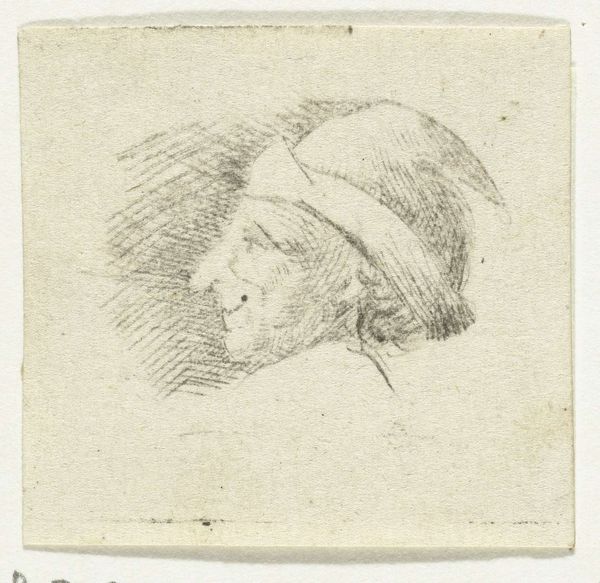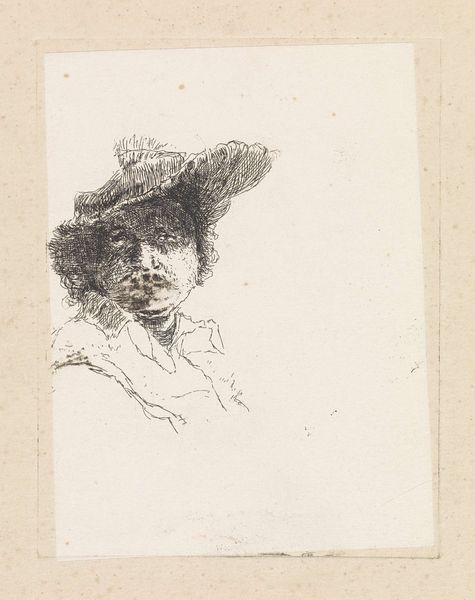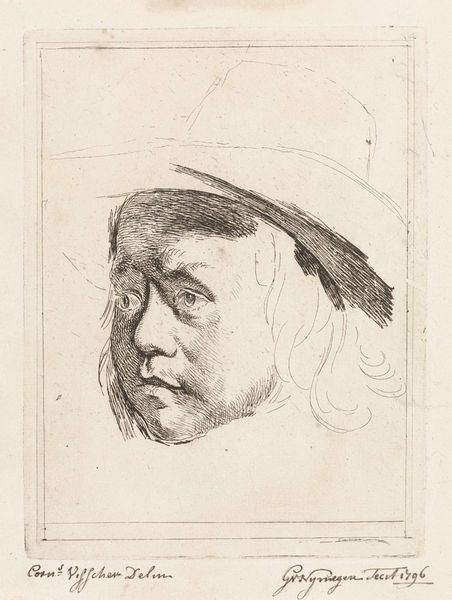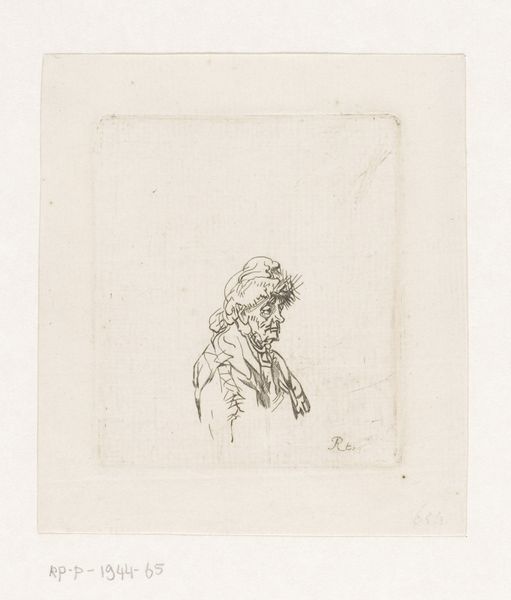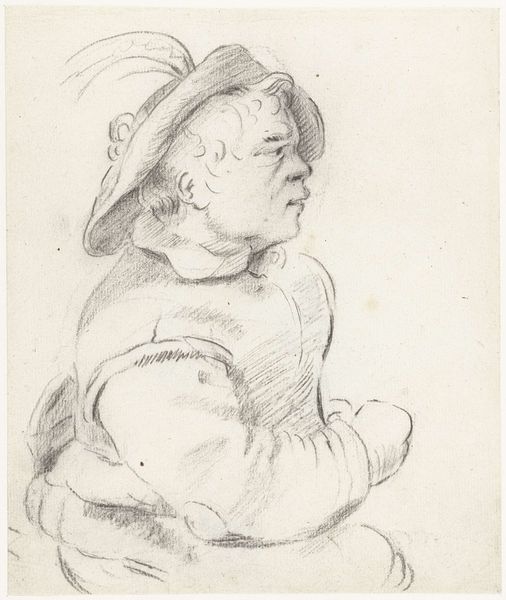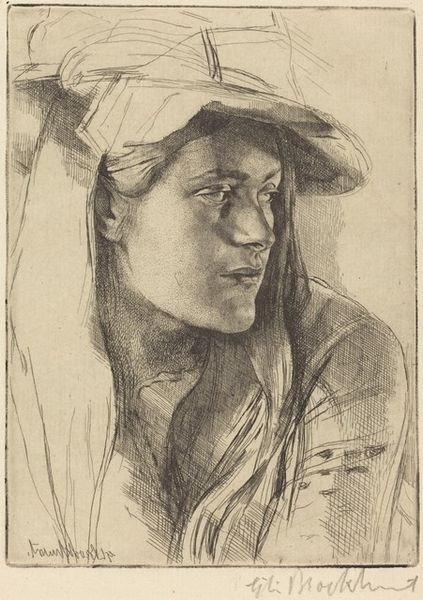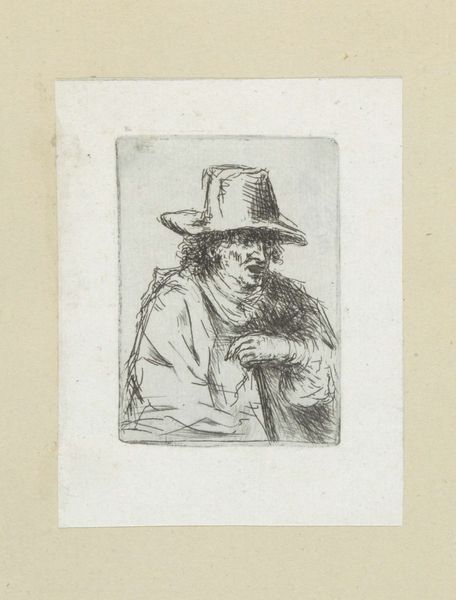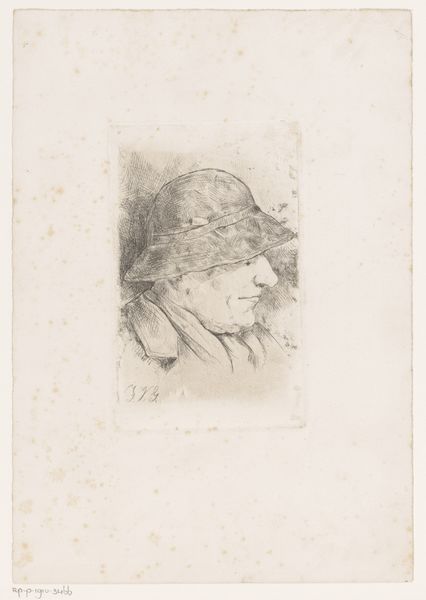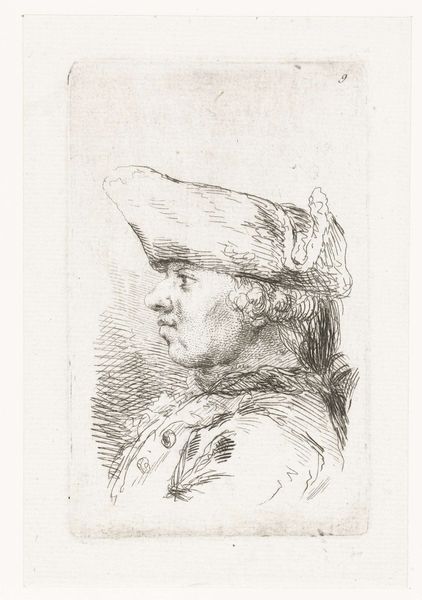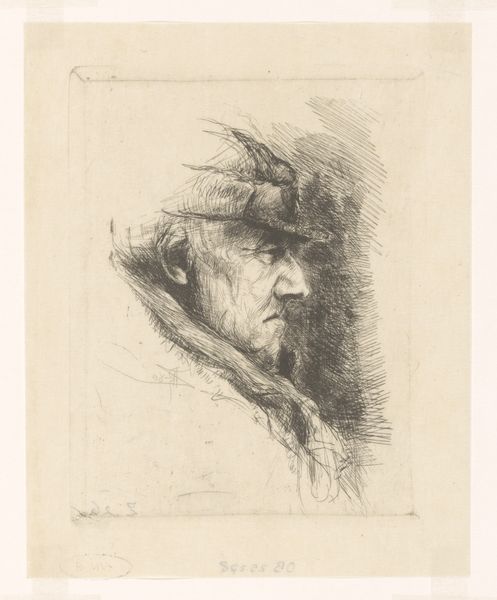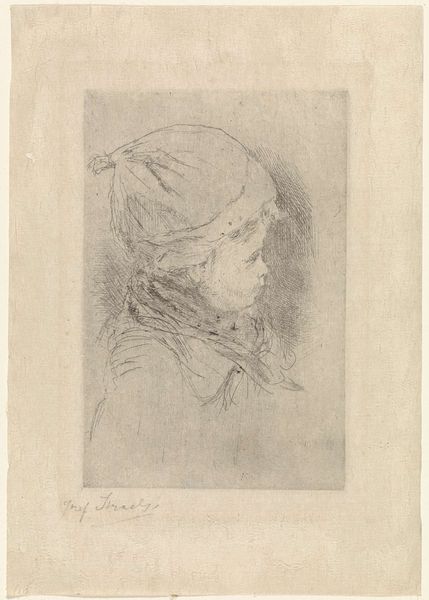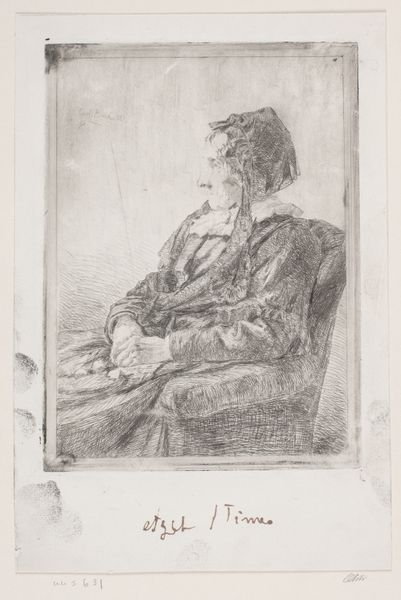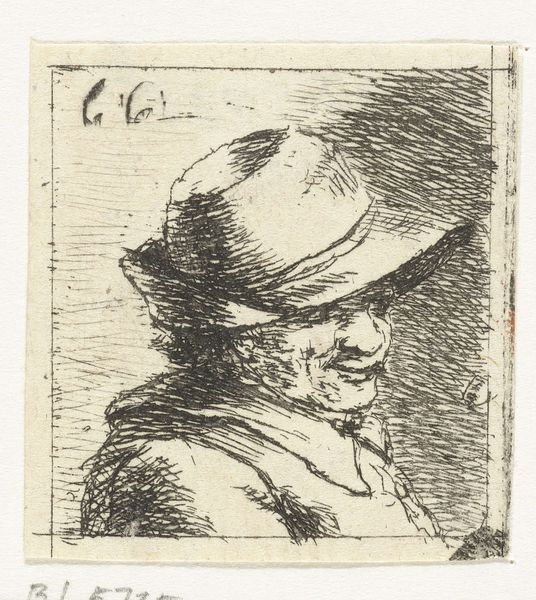
drawing, etching, ink
#
portrait
#
drawing
#
ink drawing
#
baroque
#
etching
#
etching
#
ink
#
pen-ink sketch
#
profile
Dimensions: height 110 mm, width 69 mm
Copyright: Rijks Museum: Open Domain
Curator: Take a look at this small, unassuming piece titled "Head of a Man with Glasses and a Tricorne" by François Boucher, dating somewhere between 1727 and 1755. What springs to mind? Editor: It's somber. Intimate. I'm immediately struck by the precision of the line work; those delicate etchings suggesting depth and character. Curator: Indeed. And thinking about the production of these kinds of drawings during the Baroque period, etching, for instance, facilitated the mass distribution of imagery. A move away from unique paintings intended for the wealthy elite towards accessible visuals for the bourgeoise. Editor: But let's consider what that materiality evokes! The grainy texture, the sepia tones – they create a distance. Like a faded memory. The subject’s averted gaze, obscured by spectacles, emphasizes that remove. Semiotically, the hat tells a lot about status and belonging at that time. Curator: Absolutely, but it’s also important to recognise Boucher's position. Trained at a young age he produced hundreds of drawings as designs for other engravers, craftspeople and painters; essentially acting as an industrious image-producer rather than a traditional singular “artist.” These images formed part of a wider network. Editor: While true, observing the delicate cross-hatching around the face, and the bold strokes defining the tricorne's shape, speak to Boucher's mastery. The contrast creates volume; look at how light catches the brim! Such control elevates the drawing above mere utilitarian function, toward a deeper exploration of form. Curator: But wouldn’t you say that his prolific approach actually questions this idea of an isolated 'master?' He utilized the print-making processes of the period for profit by selling these images as discrete drawings as well as licensing their re-use in commercial projects like book illustrations or as inspiration for tapestries or porcelains. Editor: Fair point. Seeing this artwork again does remind us that appearances are often deceptive, hiding fascinating exchanges of labor and market influence of artmaking during the Baroque. Curator: Indeed. I leave with a fuller appreciation of Baroque era image circulation.
Comments
No comments
Be the first to comment and join the conversation on the ultimate creative platform.
